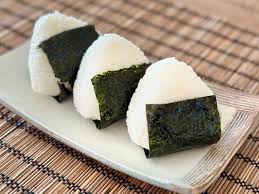
The Many Faces of Onigiri: Japan’s Humble Konbini Treasure
Share
The Many Faces of Onigiri: Japan’s Humble Konbini Treasure
It’s early afternoon in Tokyo. You step into a Japanese Konbini, the kind of place that smells faintly of coffee, miso soup, and steamed buns. Just by the entrance, tucked neatly into refrigerated shelves, sit rows of triangular rice parcels wrapped in crisp seaweed — onigiri.
They’re simple at first glance, yet somehow irresistible. These Japanese rice balls aren’t just snacks. They’re comfort food, tradition, and craftsmanship all wrapped in nori.
What Is Onigiri?
Onigiri (おにぎり) literally means “to hold” — rice shaped by hand, filled with something savoury, and wrapped in seaweed. It’s one of the oldest forms of Japanese food, a portable meal carried by travellers and samurai centuries ago.
Today, it’s the heartbeat of the Japanese convenience store. From 7-Eleven Japan to FamilyMart and Lawson, every Konbini has its own range of flavours, each perfectly balanced between nostalgia and innovation.
Classic Fillings: The Flavours of Home
Every local has their favourite.
Some reach for the salmon onigiri — a perfect balance of salt and richness that pairs beautifully with plain rice. Others go for umeboshi, a pickled plum with a tart punch that wakes you up better than any espresso.
There’s tuna mayo, creamy and mild, Japan’s answer to the Western sandwich. Konbu (simmered seaweed) offers subtle sweetness, while tarako (cod roe) brings a pop of salt and colour. Each one feels familiar, like a small taste of home.
You’ll find all of these neatly arranged in the chilled section of any Konbini Japan, labelled and dated with care. Freshness isn’t optional — it’s expected.
New Creations: Konbini Innovation at Its Best
Modern Konbinis love to play with flavour. Limited-edition onigiri appear with every season — yuzu-flavoured miso, grilled mackerel with sesame, or wagyu beef with soy glaze. Some even feature local specialties: Hokkaido butter rice, Okinawan pork, Kyoto miso.
It’s part of what keeps people coming back. You never know what new Konbini snack you’ll find that week.
The biggest names, like 7-Eleven Japan and Lawson, collaborate with chefs and food producers to create new styles, from grilled onigiri to premium versions wrapped in roasted nori. Convenience doesn’t mean compromise — not here.
How to Eat It Like a Local
If you’ve ever wondered how the seaweed stays crisp, there’s a small trick in the packaging. A clever pull-tab system separates the rice and nori until the last moment. Peel, wrap, and bite — the texture snaps, the rice still warm from the shelf warmer nearby.
That’s the beauty of Konbini culture: even the simplest snack is designed with precision.
Many locals eat their onigiri while walking to the train, sitting by the river, or between meetings. It’s fast, cheap, and deeply satisfying.
More Than a Snack
Onigiri may be small, but it carries something larger — the idea that food doesn’t need to be elaborate to bring comfort. It’s the perfect mix of care, convenience, and quiet beauty.
Whether you pick one up from FamilyMart, Lawson, or your neighbourhood 7-Eleven Japan, you’re holding a piece of Japan’s everyday rhythm in your hand.
